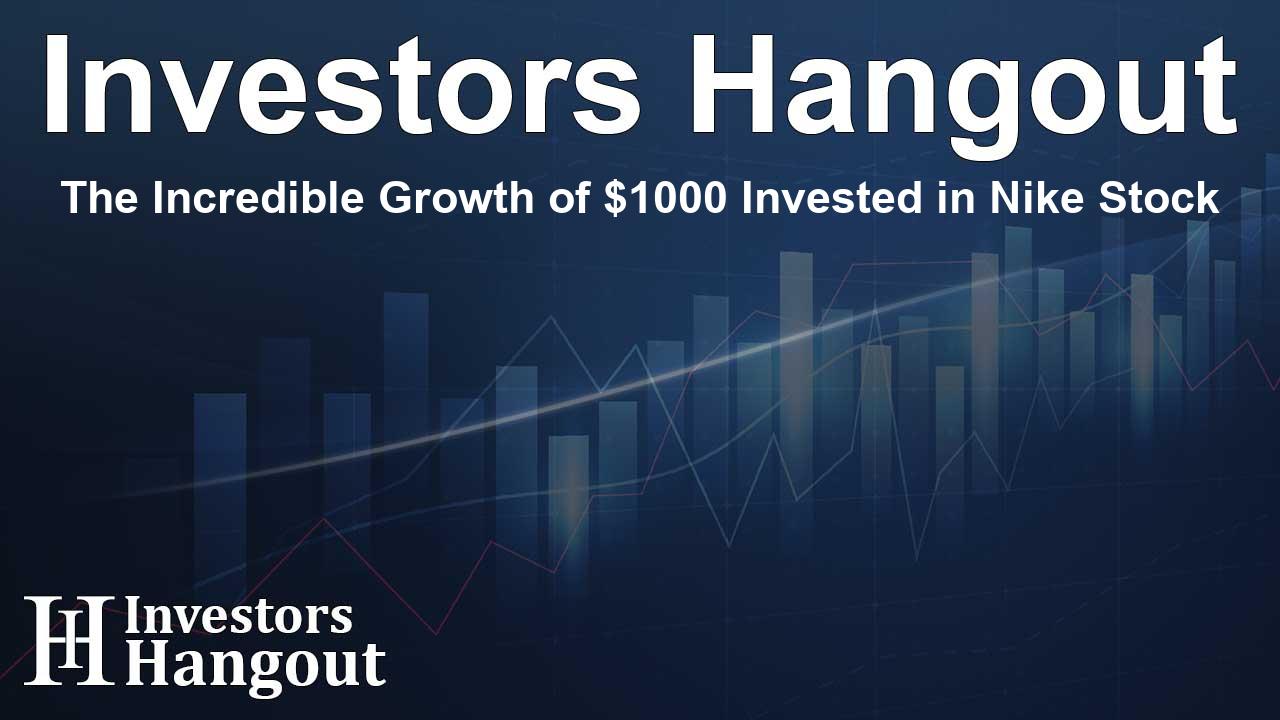The Incredible Growth of $1000 Invested in Nike Stock

The Incredible Growth of $1000 Invested in Nike Stock
Nike (NYSE: NKE) has shown an impressive performance over the last two decades, outpacing the market by 3.18% annually, resulting in an average annual return of 11.39%. With a market capitalization currently resting at $122.57 billion, Nike has become a formidable player in the retail and sporting goods sector.
How a $1000 Investment in NKE Has Transformed
To truly appreciate the growth potential of investing, consider this: a $1000 investment in Nike stocks 20 years ago would now be worth approximately $8,660.93. This considerable increase is reflective of a price of $81.75 per share at the time of writing. The fundamental takeaway here is the power of long-term investments and the significant impact that compounded returns can make over time.
Nike’s Prosperous Journey in the Market
The past two decades have not only showcased Nike's innovative marketing strategies but also its commitment to product quality and consumer engagement. Each year, Nike has consistently demonstrated resilience and adaptability, contributing to its robust market performance. This has played a crucial role in attracting investors and solidifying its place in the hearts of the consumers.
Understanding Compounded Returns
The concept of compounded returns is paramount for investors. As financial gains accrue over time, reinvesting those returns leads to exponential growth. This principle is at the heart of what makes long-term investments so appealing. The larger your initial investment, the more significant your returns can be when combined with consistent reinvestment.
Final Thoughts on Investing in Nike
So, what can we learn from this analysis? The primary lesson is the profound effect of time and patience in the investment world. While the stock market can be unpredictable in the short term, historical data confirms that steady growth is achievable, especially with companies like Nike that have a strong foundation and outlook.
Frequently Asked Questions
What is the average annual return of Nike stock?
Nike has provided an average annual return of 11.39% over the past 20 years.
How much would a $1000 investment in Nike be worth today?
A $1000 investment in Nike stock would be worth approximately $8,660.93 today.
What factors contribute to Nike's stock performance?
Nike’s innovative marketing strategies, strong product quality, and consumer loyalty all contribute to its strong stock performance.
Why is understanding compounded returns important?
Understanding compounded returns is crucial as it allows investors to recognize the potential for exponential growth over time through reinvestment of earnings.
What does the future hold for Nike stocks?
While the future is uncertain, Nike's history of resilience and innovation suggests that it may continue to be a strong player in the market.
About Investors Hangout
Investors Hangout is a leading online stock forum for financial discussion and learning, offering a wide range of free tools and resources. It draws in traders of all levels, who exchange market knowledge, investigate trading tactics, and keep an eye on industry developments in real time. Featuring financial articles, stock message boards, quotes, charts, company profiles, and live news updates. Through cooperative learning and a wealth of informational resources, it helps users from novices creating their first portfolios to experts honing their techniques. Join Investors Hangout today: https://investorshangout.com/
Disclaimer: The content of this article is solely for general informational purposes only; it does not represent legal, financial, or investment advice. Investors Hangout does not offer financial advice; the author is not a licensed financial advisor. Consult a qualified advisor before making any financial or investment decisions based on this article. The author's interpretation of publicly available data shapes the opinions presented here; as a result, they should not be taken as advice to purchase, sell, or hold any securities mentioned or any other investments. The author does not guarantee the accuracy, completeness, or timeliness of any material, providing it "as is." Information and market conditions may change; past performance is not indicative of future outcomes. If any of the material offered here is inaccurate, please contact us for corrections.